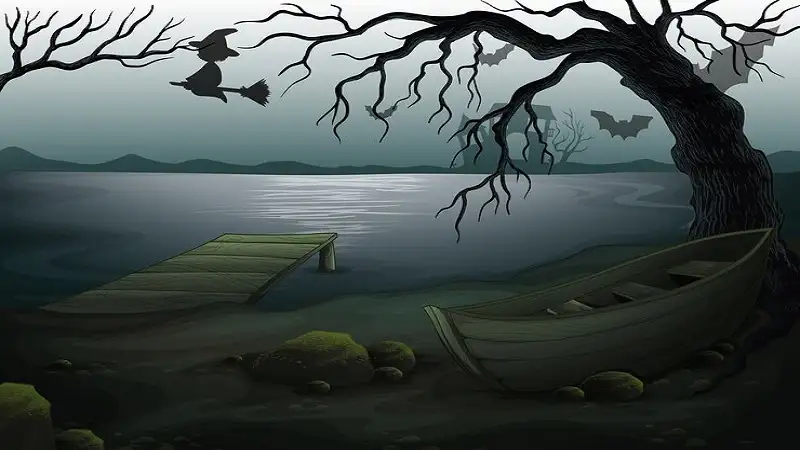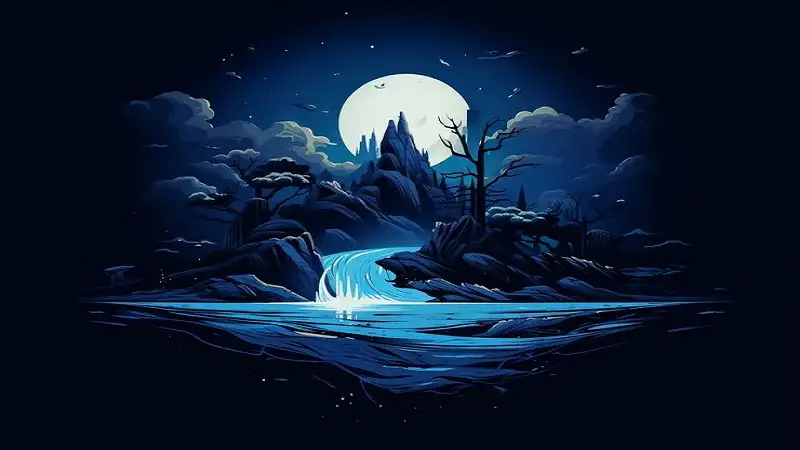Art:uw7mc1jmhvq= Dark Images has always been a reflection of human experience, ranging from beauty to the depths of despair. One particular genre that captures the attention of viewers, while sometimes unsettling them, is dark art. This type of art explores deep emotional, psychological, and symbolic themes, often presenting images that evoke mystery, fear, and wonder. In this article, we’ll dive deep into dark art imagery, its appeal, techniques, and significance in today’s world.
What is Dark Art?
Art:uw7mc1jmhvq= Dark Images isn’t just about creating scary images or making something look creepy. It’s a genre that delves into profound topics such as mortality, the subconscious mind, and the unknown. Dark art plays with emotional depth, evoking feelings of mystery, dread, or contemplation.
Evolution of Dark Art Through History
Art:uw7mc1jmhvq= Dark Images has been around for centuries, with various cultural movements contributing to its evolution. From the macabre depictions of death in the Middle Ages to the surreal and haunting imagery of the 20th century, dark art has always been a way to reflect on life’s darker aspects.
Psychological Appeal of Dark Images
The human mind is naturally drawn to the unknown. Art:uw7mc1jmhvq= Dark Images captivate us because they connect with emotions we often suppress. Exploring these feelings allows us to experience catharsis, relieving emotional tension in a safe way.
Connection Between Human Emotions and Dark Art
Art:uw7mc1jmhvq= Dark Images taps into complex emotions like fear, sorrow, or curiosity. By confronting these emotions visually, we better understand ourselves and the human condition.
The Power of the Subconscious Mind
Our subconscious holds memories, thoughts, and emotions we’re not fully aware of. Dark art gives these subconscious elements a voice, allowing artists and viewers alike to explore hidden aspects of their psyche.
Techniques Used in Creating Dark Art
Artists use specific techniques to evoke the desired mood in dark art.
Use of Contrast and Shadow
Contrast and shadow are essential tools. The interplay of light and darkness creates a sense of mystery and intrigue, drawing attention to the subject while keeping parts of the image hidden.
Color Palette and Symbolism
Colors in Art:uw7mc1jmhvq= Dark Images often include blacks, deep reds, purples, and muted tones. These colors symbolize emotions such as despair, rage, or mystery. Bright colors are rarely used unless they’re meant to contrast sharply with the darker elements.
Themes Commonly Found in Dark Art
Art:uw7mc1jmhvq= Dark Images often explores universal themes that speak to our deepest fears and curiosities.
Life, Death, and Mortality
Death and mortality are some of the most common themes in dark art. These works provoke reflection on the transient nature of life and the inevitability of death.
The Unknown and the Uncanny
Art:uw7mc1jmhvq= Dark Images frequently delves into the unknown, evoking feelings of uncertainty and eeriness. The uncanny, where the familiar becomes strange, is a recurring motif in this genre.
Famous Artists Known for Dark Art Imagery
Many artists have contributed significantly to the dark art movement, each bringing their unique perspective.
Francisco Goya’s Haunting Visions
Goya’s later works, particularly his “Black Paintings,” reflect a bleak outlook on humanity and the world. His use of darkness and surreal imagery has left a lasting impression on dark art enthusiasts.
H.R. Giger and His Surrealistic Dark Worlds
H.R. Giger, known for his biomechanical designs, blends human anatomy with machines in disturbing ways. His work on the “Alien” film franchise has made his dark, surreal visions iconic.
The Cultural Impact of Dark Art
Art:uw7mc1jmhvq= Dark Images has left a mark on various aspects of culture, from media to fashion.
Dark Art in Movies and Video Games
The aesthetics of Art:uw7mc1jmhvq= Dark Images have inspired many films and video games, helping to create atmospheric, moody environments that immerse audiences in a world of fear and mystery.
The Role of Dark Art in Modern Fashion
Dark themes have also permeated fashion, with many designers incorporating gothic and eerie elements into their collections. Dark art’s influence can be seen in everything from high-end runway designs to alternative streetwear.
The Rise of Dark Digital Art
With digital tools, artists now have more freedom to create and manipulate dark imagery.
Using Digital Tools to Enhance Shadows and Mood
Digital platforms offer an array of tools that can intensify the impact of Art:uw7mc1jmhvq= Dark Images by allowing more precise control over shadows, lighting, and textures.
Social Media Platforms as a Space for Dark Art Creators
Social media has become a hub for dark art creators to share their work, interact with fans, and build communities around the shared appreciation for dark themes.
The Controversy Surrounding Dark Art

Dark art is not without controversy. It often challenges societal norms and raises difficult questions.
Misconceptions About Dark Art
Some people view dark art as inherently negative or disturbing, failing to see the emotional depth and complexity behind the imagery.
Censorship and Criticism
Art:uw7mc1jmhvq= Dark Images sometimes faces censorship due to its unsettling nature. However, artists defend their work as a valid form of expression that taps into universal human experiences.
Dark Art and Its Connection to Mental Health
While dark imagery can be disturbing, it also offers a form of healing.
How Dark Imagery Can Be Therapeutic
For some, creating or viewing dark art can be therapeutic. It provides an outlet to process and express difficult emotions.
Understanding the Expression of Pain and Struggle
Artists often use dark imagery to convey personal struggles, turning their pain into something tangible and relatable.
How to Interpret Dark Art
Understanding dark art requires a shift in perspective.
Finding the Hidden Meaning in Dark Themes
Art:uw7mc1jmhvq= Dark Images often contains layers of meaning. What appears unsettling on the surface may reveal deeper truths about human nature.
Understanding Symbolism in Dark Images
Dark artists use symbolism to express complex ideas. Interpreting these symbols can lead to a more profound understanding of the work.
Collecting Dark Art: What You Should Know
If you’re interested in collecting dark art, there are a few things to keep in mind.
Tips for Purchasing Dark Art
When buying dark art, consider the artist’s reputation, the work’s uniqueness, and its emotional resonance with you.
Preserving and Displaying Dark Art
Proper lighting and placement are essential when displaying dark art. Too much light can wash out the shadows, diminishing the impact of the piece.
How Dark Art Influences Other Art Forms
Dark art doesn’t exist in isolation; it influences many other creative forms.
The Influence of Dark Imagery on Photography
Photography often incorporates elements of dark art, using light, shadow, and mood to evoke powerful emotions.
How Dark Art Has Shaped Literature
Art:uw7mc1jmhvq= Dark Images themes of fear, mortality, and the unknown have inspired countless works of literature, from gothic novels to modern horror stories.
Exploring Dark Art as a Beginner
If you’re interested in creating dark art, don’t be afraid to start experimenting.
How to Start Creating Your Own Dark Art
Begin by sketching out your thoughts and emotions. Focus on contrast, symbolism, and the interplay of light and shadow.
Learning from Online Resources and Communities
The internet offers numerous resources, tutorials, and communities for aspiring dark artists. Engaging with these communities can provide feedback and inspiration.
Conclusion
Art:uw7mc1jmhvq= Dark Images with its deep symbolism and emotional resonance, continues to captivate and provoke thought. Whether it’s through classic paintings or modern digital creations, the genre opens up a space for reflection on life’s more profound and mysterious aspects.
